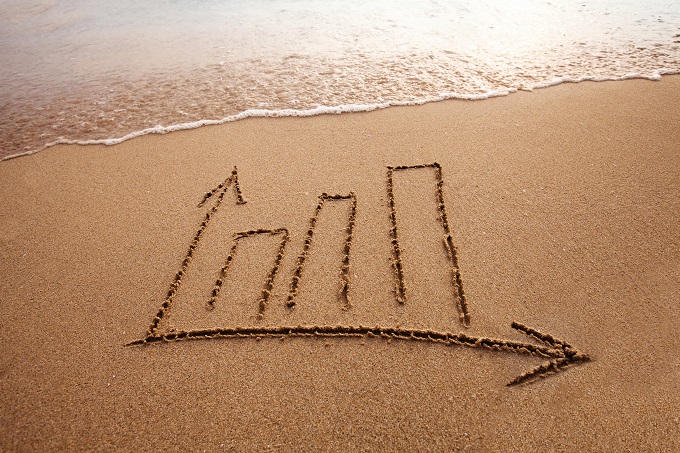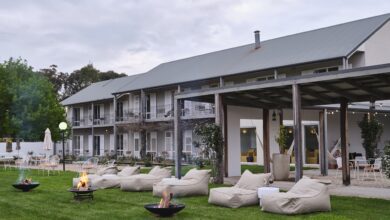
Fundamentals point to growth for Australia’s tourism industry
Australia welcomed nearly nine million international visitors during 2017, demonstrating the country’s attractiveness as a global destination, according to Deloitte Access Economics’ latest Tourism and Hotel Market Outlook.
“The picture remains remarkably friendly for economic growth – globally and here at home – which, together with a supportive dollar, sets the scene for continuing growth of Australia’s tourism industry,” says Adele Labine-Romain, Deloitte Partner and national Tourism, Hospitality and Leisure leader.
International tourism
2017 was another record year for international tourism. International visitor arrivals grew strongly, up 6.5% to over 8.8 million visitors in 2017 – an additional 540,000 visitors on 2016.
Arrivals over the last three years have consistently outpaced global economic growth. All indications are this trend is set to continue – the growth in the number of Chinese visitors to Australia eased in 2017, but was still up 12.2% on 2016.
“These numbers are outstanding relative to any standard benchmark,” says Labine-Romain. “Over the last five years, the number of annual Chinese arrivals has more than doubled and now represents 15% of all arrivals into Australia. In 2017, Australia welcomed 1.36 million visitors from China, essentially on par with visitors from New Zealand.”
India is another exciting market which has been building momentum over a number of years, and recorded the highest growth rate of any source market at 15.2%, on the back of a five-year average growth rate of 13.4%.
The growth in visitor numbers from Japan and Korea moderated to 4.0% and 7.7%, respectively.
International visitor trips were up across most of the states and territories. Tasmania retained its position as Australia’s fastest growing stopover destination for international travellers, up 16.6%, followed by the ACT, at 10.2% making the most of new international flights into Canberra, New South Wales (+8.9%) and Victoria (+7.0%).
Domestic tourism
Domestic visitation grew 7.1% in 2017, chalking up its seventh successive year of growth. Domestic trips once again outperformed real GDP, underpinned by strong growth in business travel (+14%). Leisure trips on the other hand experienced more modest growth (+3.4%).
“The increase in business travel was reflective of improved economic performance in recent quarters and stronger business confidence,” says Labine-Romain.
As domestic tourism has strengthened, the number of trips Australians have taken overseas has also increased. Outbound travel by grew at 5.2% in 2017, with almost 10.5 million trips. This growth remains down from the double-digit growth in the earlier part of the decade, but up on the previous year.
Growth in outbound travel has been particularly strong to countries with which Australia has growing family and business ties, in particular China (+15.8%) and India (+14.2%). The latest Census figures show strong population growth from these markets; Australian residents of Chinese and Indian descent combined now total almost one million.
Hotel market performance
Hotels across the country performed well during 2017, recording positive gains across key indicators. Room occupancy added one percentage point over the year to reach 68.5%.
“In the eight years since the global financial crisis, average room rates across the country have been increasing, with the trend continuing in 2017. Room rates across the country were up 2.4% to AU$161, paving the way for solid revenue per available room (RevPAR) growth of 3.0% over the year,” says Labine-Romaine.
Other key hotel sector highlights include:
- 5,500 new rooms came onto the market in 2017, an addition of 2.3% to the national room stock
- Melbourne, Hobart and the Gold Coast experienced softer occupancy rates over the year, losing at least a percentage point each, while Perth saw a 4.6% decline
- Darwin’s occupancy grew by 8.8%, the fastest of any capital city, though the city’s future prospects are expected to be more subdued as the market adjusts to demand changes this year
- Room rates were the highest in Sydney (AU$251.20), a full AU$50 over Melbourne (AU$199.60)
- Average room rates grew the most in the predominantly leisure-focused Cairns and Tropical North Queensland market (+8.7%) to reach AU$155.
Tourism and hotel market outlook
Global economic conditions remain favourably oriented for Australian tourism. While travel costs are expected to increase as oil prices rise slightly over the next few years, the Australian dollar is anticipated to moderate and drift downward towards 70 cents in the medium-term.
Deloitte Access Economics forecasts international visitor trips to grow by 6.9% p.a. and visitor nights by 6.4% p.a. on average over the next three years. The realisation of this growth would see visitor arrivals reach the 10 million milestone in 2020.
“On the domestic tourism front, growth conditions are expected to strengthen over the next three years, with wage growth and national income increasing real household disposable income adding to demand for domestic tourism,” explains Labine-Romain. “These factors point to a solid outlook for domestic travel, with domestic trips forecast to grow by 3.7% p.a. and visitor nights by 3.4% p.a. over the next three years.
“Looking ahead for the hotel sector, Australia will see a significant number of new properties coming online which will have a strong impact on the market.”
2019 and 2020 are expected to see the largest amount of new rooms becoming available, with an increase of 3.4% to total supply each year. As a result, the opportunity to grow occupancy rates any further over the next three years will be limited in many markets.
Labine-Romain adds:
“High-end brands including the Ritz Carlton, W Hotels and Mandarin Oriental are all expected to make their debut appearances in Australia over the next few years. Despite expectations of limited growth in occupancy rates, these and other luxury properties will help push the average daily rate upward over the three-year forecast period, growing at 2.8% p.a.”

AccomNews is not affiliated with any government agency, body or political party. We are an independently owned, family-operated magazine.







